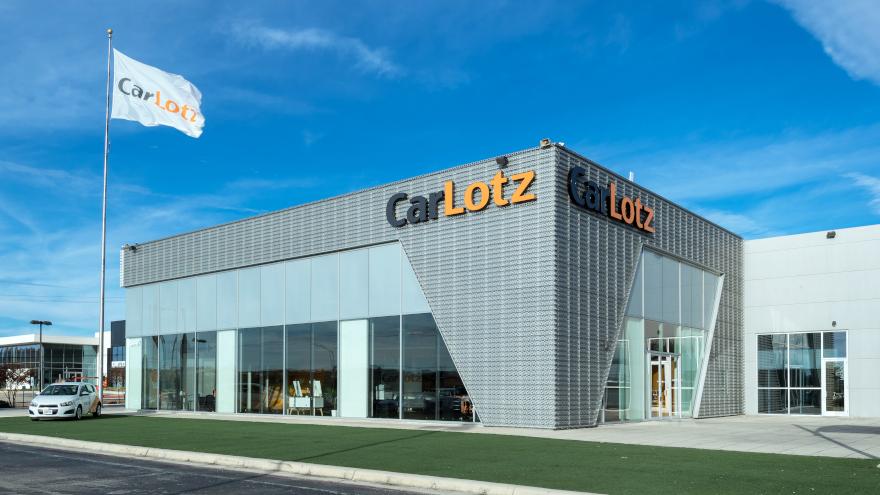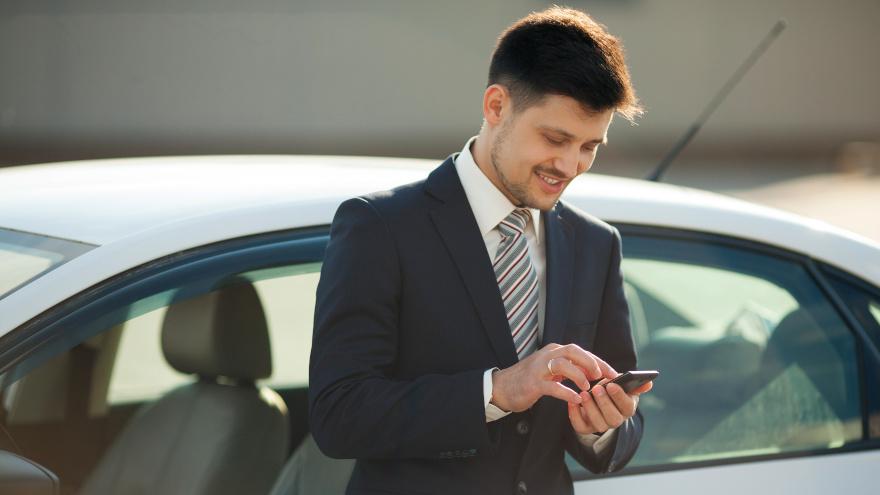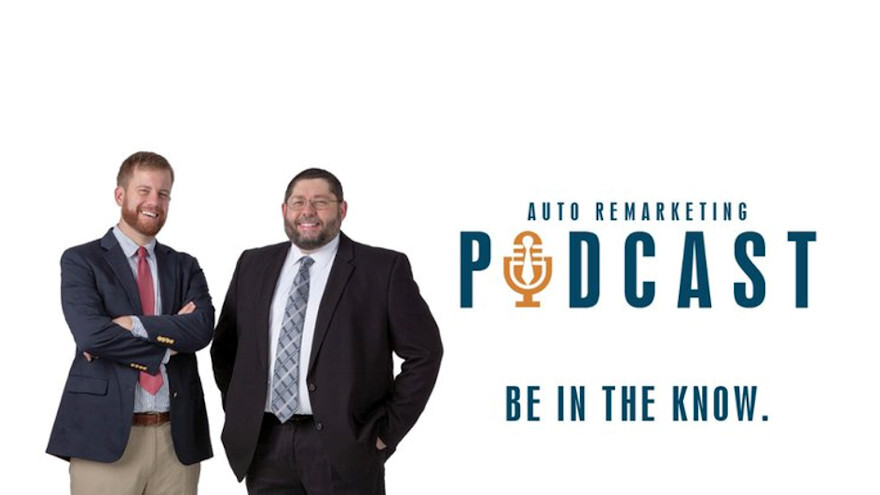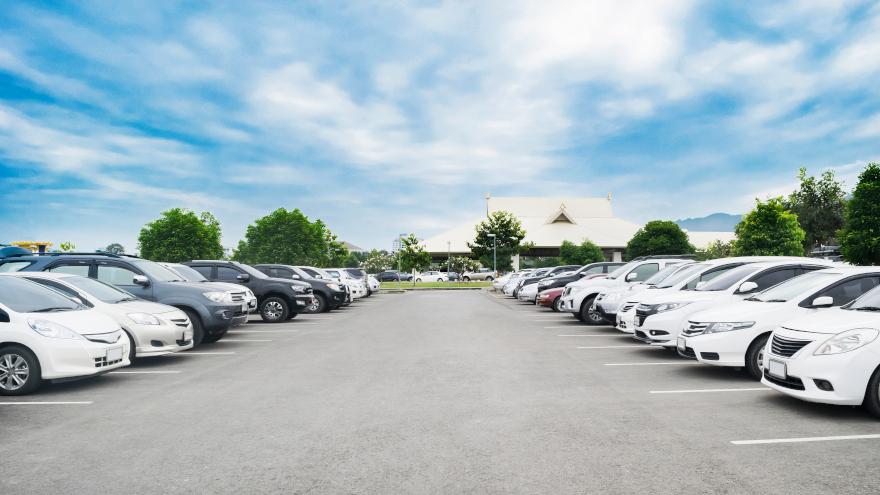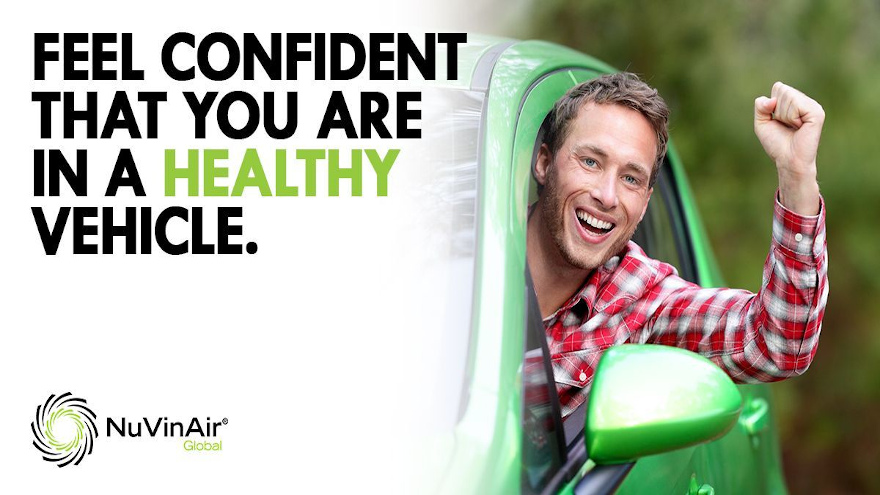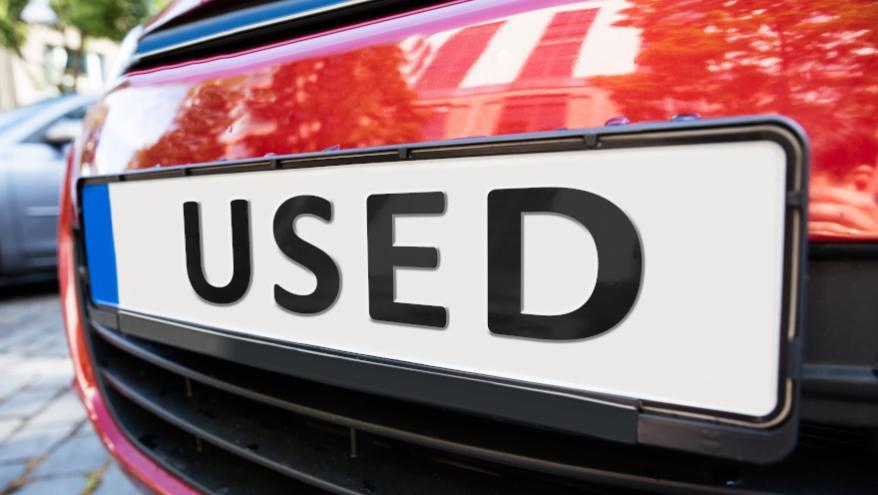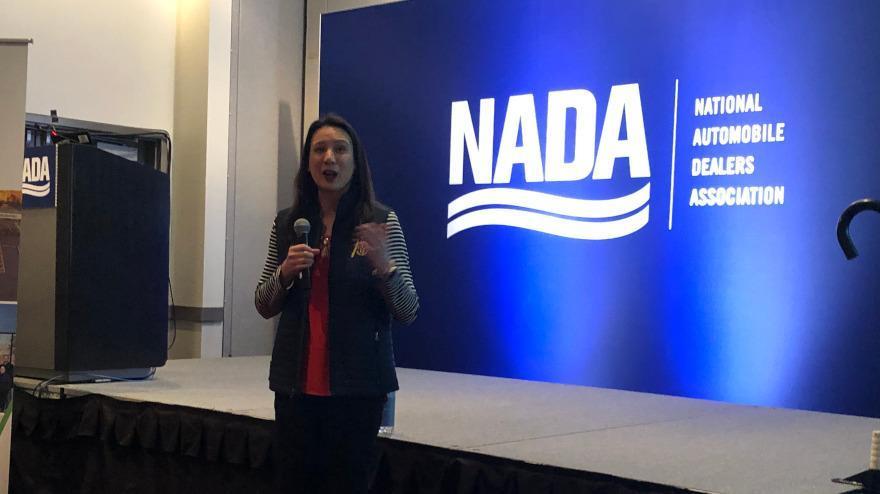It’s a new day — we’re seeing the other side of this pandemic and gaining additional clarity on the future. It’s been an unusual, stressful, and frightening few months as we’ve all navigated our personal andrbusiness lives in the wake of COVID-19.
While companies throughout our industry have been forced to modify basic business practices, dramatically reduce headcount, fortify balance sheets, and adjust to the most abrupt business interruption we’ve ever seen, many of us have had to take a step back and try to figure out what this new landscape means for our clients and how we can adapt to ensure that we continue to meet client needs with necessary value.
The changes we’ve seen in the industry have impacted all segments of the supply chain.
From OEMs that shut down plants, to rental car companies that saw a 90% drop in demand and, as a result, bankruptcy, to auctions that have had to shift to online-only sales, to fleet management companies that are trying to turn their clients’ vehicles into cash without giving them away, to retailers that have been forced to shift quickly to online sales only or shut down altogether.
The data suggests that sale rates at the auction dipped into the 30% range and have been rebounding, while pricing took a 15%-20% decline. On the retail side, we saw about a month of year-over-year sales declines of up to 75%, but the retail sales pace quickly rebounded to pre-COVID levels by mid-May.
From a pricing perspective, retail oddly didn’t see a dip in pricing of more than 2-3% which led to a significant disparity between wholesale and retail returns that many dealers and consigners who remarket at retail took advantage of. While we typically see net retail checks to our clients that are about $1,000 over their expected wholesale net proceeds, during the depths of COVID we were seeing lifts of over $3,000 to $5,000! The market has certainly converged over time, but the retail lift over wholesale remains significant.
So how has retail remarketing adjusted to this new post-COVID world? It’s safe to say that auto retailers fall into two categories: 1) those that deserve the “used-car salesman” stereotype and 2) those that don’t.
In the post-COVID world, it’s going to be harder and harder to survive as an old-school, giant inflatable gorilla on the roof used-car dealership but it’s actually going to be easier and easier to differentiate yourself as a forward-thinking, customer-centric, used-car retailer, as the bar has been raised by consumers.
Do you maintain a clean and safe environment for your guests and teammates? Do you do business in a manner desired by the car-buyer — either online, in-store, or a hybrid?
Do you offer the assurance that the vehicle is in good shape and do you do something about it if it turns out its not? Do you take advantage of technology to ensure that buyers feel comfortable buying a car sight unseen?
If you’re a retailer of used vehicles and you answered no to any of the questions above, you’re destined to be Blockbuster versus Netflix. These are no longer unique differentiating features of a dealership, they are a requirement to do business.
So the new world of retail is touch-free, online AND in-store, paperless, and quick while offering the buyer the comfort that if they bought a bad apple, you’ll figure out a way to make it a good apple or you’ll give them a better apple.
If you do all of that and you can wrap it with in-demand inventory at fair prices, you will do well. We’ve adopted all of these policies and procedures and, as a result, less than two months after we were virtually shut down, we are selling more cars than we did this time last year.
Our clients, the big national consignors, fleet management companies, banks and financial institutions, rental-car companies, and others, are getting their cars sold more quickly at great prices and historic lift over wholesale values. We anticipate that as the flood of inventory that has bogged down the physical auctions works its way through the supply chain, the elevated lift of retail over wholesale will last for many months to come.
Michael Bor is chief executive officer of CarLotz
Restrictions are lifting and losses are declining, but the post-COVID19 pent-up demand has not yet fully been captured by the auto retail industry.
To capitalize on this demand, dealers need to market themselves according to the shopper expectations established as our “new normal.”
Luckily, there are a few strategic measures dealers can take to put themselves and their customers in the best position to do business in a safe and efficient way.
The following tips are informed by a recent COVID-19 Digital Shopping Study from Cox Automotive, to help give dealers confidence during uncertain times.
Market for the moment
Forty-eight percent of shoppers delaying their vehicle purchase will be ready to transact within a month of restrictions lifting. This means many are shopping as we speak.
Of those shoppers, 52% are still very concerned about COVID-19, so it’s imperative that dealers are communicating in real-time via digital channels — especially their websites — about what their business is doing to keep their customers safe when doors are allowed to reopen.
If dealers are offering sanitation procedures, enforcing social distancing protocols, offering text, email and chat communication options and moving purchasing steps online, they should let their customers know, featuring it front and center on their website.
Practice proactivity where you can
Starting to see a decline in COVID-19 cases and government restrictions lifting are among the top triggers for accelerating vehicle purchases.
While dealers can’t control those factors, they can control another top trigger — a deal or incentive buyers can’t refuse. This is where being proactive comes in.
Dealerships should focus on using their website to highlight deals and answer the common questions from consumers like, “Is the dealership open? Are there modified hours?”
Or “How much of the purchase process can I complete online?” This can be done through on-site creative and content, including slides, banners, and landing pages during these times and beyond.
The at-home experience is here to stay
As it turns out, people really like the ability to complete a car purchase from the comfort of their own home — and there’s a good chance this will stay the case even when they don’t have to.
In fact, 62% of consumers state they are now more likely to complete steps of the car buying purchase online than ever before. To accommodate this growing demand, dealers need to ramp up their digital capabilities with video chat options, ultra-transparent deal building guides and screen sharing options with sales associates that mimic what it would be like to sit in the dealership together.
The bottom line is, that with more potential customers at home and online, dealers need to go the extra mile to reach and market to them — and yes, this might actually mean door-to-door service.
The COVID-19 pandemic has forced positive change and modernization for many dealerships, that in the long-run, will allow them not only to reimagine how they do business, but to demonstrate how successful they can be with new marketing and sales techniques that benefit both their customers and their businesses.
Erica Danford is vice president of managed services at Dealer.com.
People might not be driving as much nowadays because of COVID-19, but LoJack Global senior vice president and general manager Justin Schmid pointed out that company data is showing that vehicle thefts are climbing.
During this Auto Remarketing Podcast with Nick Zulovich, Schmid shared ways dealerships can help their customers take advantage of vehicle telematics to improve protection while also potentially boosting store revenue and more.
To listen to the episode, click on the link available below, or visit the Auto Remarketing Podcast page.
Download and subscribe to the Auto Remarketing Podcast on iTunes or on Google Play.
Last week marked the first time since May that auction sales of vehicles up to 8 years old failed to crack the 100,000-unit mark, but they were still ahead of pre-virus forecasts, according to the Auto Industry Impact Report from J.D. Power released Wednesday.
There were 97,000 auction sales for the week ending July 12. While that’s down from 100,000 units the week before, it’s still 11% stronger than what was projected before COVID-19, according to J.D. Power’s report.
Similarly, Black Book noted in its COVID-19 Market Update released Tuesday: “The trend we have seen over the last month continues with strong sales and even stronger prices. No-sales continued to increase marginally this past week as sellers held firm to floors and buyers have begun to show some restraint.”
The firm added: “Despite most auctions continuing to operate under an all-digital platform, sales volume has rebounded to a level consistent with, and on some days higher, than this time last year. This is being driven by strong retail sales and the need to backfill, which are then leading dealers to use auctions as their main source of inventory.
“The number of sales bottomed out around an 80% year-over-year decline when most auctions closed their physical sales (and some closed entirely) at the end of March,” Black Book said.
Sales rates at auctions also remain steady and strong, according to the Black Book data.
Going back to the week of June 8, the estimated average weekly sales rate at U.S. auctions has remained above 60% for five straight weeks, with the rate for the week of July 6 coming in at 63%.
“At the onset of the pandemic, as shelter-in-place orders went into effect, sales rates quickly tumbled into the teens, but rates have been climbing each week and have now stabilized,” Black Book said in the report. “Bidding activity isn’t slowing down, but no-sales have slightly increased over the last few weeks as sellers are holding firm to floors, but buyers are exercising caution to not get loaded up in high priced inventory if the market takes a turn. Overall conversion rates remain consistent with a springtime market instead of mid-July.
These wholesale sales volumes and sales rates come as auction prices continue to rise. The week ending July 12 marked the 12th straight uptick in wholesale prices, according to J.D. Power. Over the course of those gains, wholesale prices have climbed a cumulative 30%, J.D. Power indicated. They’re also up 10% from early March, the company said.
In a similar analysis, Cox Automotive chief economist Jonathan Smoke said in a video report from Tuesday that as of this past weekend, wholesale prices were up 8.2% from the beginning of 2020 with retail prices up 2.2.%.
J.D. Power’s wholesale price index for last week was up to 110.4, a 1.5-point rise from the week ending July 5. However, that’s more moderate growth than the 2.3-point weekly average during the preceding four weeks, J.D. Power said.
“While wholesale prices remain incredibly strong, expectations are that they will begin to drift lower heading into August as pent-up demand wanes and pandemic-related macro-economic headwinds increase,” J.D. Power said in the analysis.
“By year's end, prices are expected to be more or less on par with pre-virus levels. It is important to note, however, that while the outlook is relatively optimistic, there remains a great deal of uncertainty surrounding the impact of new virus outbreaks, the potential for another round of federal stimulus, and overall employment conditions,” the company added. “Given these unknowns, a heightened degree of market volatility should be expected.”
Dealerships specialize in highlighting a vehicle’s features and performance. Store personnel can show off many great components of late-model vehicles — features such as blind-spot monitoring, turbocharged engines for improved fuel economy and power as well as touchscreens that connect to music and other entertainment options.
The COVID-19 pandemic also is creating vehicle value that’s much less tangible to measure than horsepower or even residuals, but it’s also value that might keep dealerships active well beyond when the current upending of daily life subsides.
Vehicle subscription provider Fair recently released results of a new online consumer survey conducted by Researchscape revealing surprising Americans’ viewpoints on transportation preferences and habits during the COVID-19 pandemic.
The data showed that while 10% of Americans don’t feel safe in any mode of transportation right now, 80% feel safe while in vehicles. In addition, nearly three in four Americans surveyed reported using their vehicle as a mental health escape while in quarantine.
With travel restrictions lifting in some locations but social distancing still recommended, AAA recently noted that it’s no surprise that 97% of summer travels are road trips. That’s up from an average of 87% over the last five years, according to AAA.
“While COVID-19 has made public transportation a non-starter for most Americans, an overwhelming majority of us are looking to our personal vehicles to provide safety and peace of mind during essential travel — and even to serve as escapes from the stresses of this moment,” Fair co-founder and president Georg Bauer said in a news release.
“While we all look forward to whatever ‘normal’ will look like post-pandemic, it’s clear that our cars will remain a staple of our American life for a long time to come,” Bauer continued.
More evidence of intangible vehicle value
Fair’s survey wasn’t the only recent source highlighting what having their own vehicle perhaps purchased at dealership means to individuals nowadays.
According to Deloitte’s study titled “How the pandemic is changing the future of automotive,” U.S. consumers are rethinking their relationship with personal vehicles, digital transactions and transportation, including mobility services.
Deloitte said in a news release this week that the growing use of digital tools could be supportive of overall demand, but a growing affordability issue may cause consumers to stay out of the market longer than expected. At the very least, consumers may be recalibrating their expectations relative to which vehicle segment and/or option package they can afford.
The Deloitte study indicated:
— Lingering health concerns make the idea of owning a vehicle very attractive: 74% of U.S. consumers agreed that the idea of vehicle ownership is valuable to them. This trend is being seen globally, including France (79%), U.K. (69%) and South Korea (63%).
— Personal vehicles serve as a way to maintain physical health barriers: Over half of U.S. respondents plan to limit public travel, including rideshare services for the next three months. For those in the market for a new vehicle, used vehicles may give cash-strapped consumers an interesting option to consider.
— For those consumers that remain intent on acquiring a new vehicle, expectations may shift in terms of either downgrading to a more affordable vehicle segment, and/or reducing the number of features included on the vehicle.
— Financial concerns in the face of a potentially lengthy recession magnified: 37% of U.S. consumers are delaying large purchases, such as a new car, and 21% are worried about making upcoming payments.
— Job security anxiety still lingers: 30% of currently employed U.S. consumers are fearful they will lose their job; this number is even higher across the globe, including Chile (74%), India (71%) and Mexico (65%) which are even more worried about a potential loss of employment.
— Consumer pullback impacts their vehicle ownership: 47% of U.S. consumers are planning to keep their current vehicle longer than expected. This trend also can be seen in other large automotive markets around the globe including China (65%), Japan (48%) and Germany (40%).
Other ways Americans are seeking refuge in their cars
Along with helping people feel safer on their daily commutes and errand-running, Fair’s survey showed more Americans are turning to their vehicles to be a personal safe haven. The survey was conducted online within the United States by market-research consultancy Researchscape on behalf of Fair from May 7-8 with 1,046 adults ages 18 and older.
During the recent periods of sheltering at home, the results determined:
— 30% of surveyed Americans said they used their vehicle to take a mini-break by driving around their neighborhood.
— 24% reported taking a long drive to clear their head.
— 16% responded that they have sat in their car outside their house listening to music or audiobooks.
Furthermore, Cars.com released new research revealing that 42% of in-market car shoppers plan to visit a drive-in movie theater this summer. With in-home entertainment losing its luster as summer in full gear and social distancing guidelines still in place, Cars.com pointed out that Americans are looking for new — or old — ways to safely get out of the house.
And many have turned to their vehicles for a quick escape and safe entertainment.
“Drive-in theaters are making a comeback this summer as the destination of choice for movies, music and other forms of live entertainment that people can experience without ever leaving the safety of their vehicle,” said Matt Schmitz, Cars.com’s assistant managing editor for news.
“Since the pandemic began, we've found that Americans are using their cars as an extension of their homes. They’ve resurrected the Sunday drive, are using their cars to socialize from a distance through birthday and graduation parades, and now they're using their cars as a new way to see live entertainment, too,” Schmitz went on to say.
Similar consumer findings in Canada, too
Seeking refuge within the confines of a vehicle isn’t limited to the United States. Toyota Canada uncovered similar trends in that country, too.
While road trips have long been a Canadian summer staple, a recent national survey has discovered that this year’s family vacation may look a little different, with almost three-quarters (74%) of Canadians having changed their summer travel plans due to the pandemic. With a desire to explore locally and reconnect with family, friends and nature, the day trip has emerged as this summer’s new preferred getaway, according to a national survey conducted by Ipsos on behalf of Toyota Canada.
With only a quarter (24%) of Canadians saying they’d feel comfortable taking a plane at the moment, according to the Toyota Canada survey, the automaker insisted it’s clear the car will be the go-to mode of transportation for the summer of 2020.
The majority (70%) of Canadians, however, feel comfortable travelling by car outside of their city or town, and almost half (49%) are planning at least one day trip over the next two months. This year, though, Canadians are looking for closer-to-home destinations to explore, with less than half (42%) comfortable venturing out of their province and only 21% who would visit the U.S in the near future.
Of those planning to hit the road this summer, Toyota Canada found that most are opting to stay within a 100-kilometer radius of home, making day trips the new preferred excursion.
Just because Canadians will be taking to the road this summer, Toyota Canada emphasized that it does not mean they are throwing caution to the wind when it comes to COVID-19.
An overwhelming majority (94%) of those planning a road trip who participated in the Toyota Canada survey said they will be taking extra precautions to protect both themselves and those around them. Of those going on a road trip, two-thirds (65%) said they will limit contact with people outside their immediate circle and limit their exposure to crowds (64%).
Other precautions Canadians plan to take on their road trips include wearing a mask while out in public (54%) and taking extra time to clean and disinfect surfaces inside the vehicle (43%).
“While this may not be the summer we had all envisioned, we’re excited to see Canadians getting back behind the wheel, slowing life down and exploring more of the incredible beauty Canada has to offer,” said Stephen Beatty, vice president at Toyota Canada, speaking through a news release from his cottage-turned-office somewhere near Algonquin Park.
“Whether it’s a quick day trip or a longer journey, there is no shortage of amazing, off-the-beaten-path treasures that offer great fun without the crowds,” Beatty continued. “As we continue to adjust to the new normal, the road trip is a great option for Canadians who want to get away safely, experience a change of scenery and start making new memories with loved ones again.”
Another product now is available aimed at cleaning vehicle interiors as that process has become more paramount because of the coronavirus pandemic.
This week, NuVinAir Global announced the launch of its latest product — ReKlenz-X — an EPA-approved, eco-friendly disinfectant that the company said can kill 99.9% of germs, bacteria, and viruses without compromising a vehicle’s interior or the safety of those applying it.
The Dallas-based company, which offers a suite of proprietary vehicle-cleanliness solutions and hygienic consulting for automotive businesses across the United States dubbed “Total Health,” now includes a nontoxic solution that NuVinAir Global insisted is proven to reduce cross-contamination of germs on high-touch surfaces.
“NuVinAir has proudly been at the forefront of helping ensure healthier commutes to drivers and passengers since launching in 2015, and adding this EPA-approved, oxygen-infused product that actually kills what’s behind the coronavirus gives us an exciting extension to our ‘Total Health’ application,” NuVinAir Global chief executive officer and founder Kyle Bailey said in a news release.
“Our science-backed ReKlenz-X disinfectant cleans, protects, and disinfects safely and effectively,” Bailey continued. “It’s everything our automotive partners need in guaranteeing their customers confidence in a safer, healthier vehicle.”
ReKlenz-X, which is available in 32-ounce spray bottles through automotive dealerships, detail shops, rental-car companies, service centers and vehicle fleets, is powered by a proprietary, oxygen-enriched formula that NuVinAir Global said can quickly kill bacteria and viruses by destroying their cell walls through a process called oxidation.
NuVinAir Global explained the product contains no harsh chemicals, sticky residue, or dangerous volatile organic compounds (VOCs), resulting in a clean and disinfected vehicle with no chemical smell.
“Until now, any possible solution for killing the coronavirus was wrought with harmful chemicals, expensive equipment, and residue-leaving application devices that destroy the vehicle’s interior,” NuVinAir Global chief operating officer Troy Blackwell said. “As a disinfectant and sanitizer, it can be applied to all interior vehicle surfaces using a microfiber towel.
“Paired with our premier detailing solution, ReNuSurface, as well as our patented Cyclone treatment, it takes deep cleaning to a whole new level for our automotive partners and their customers,” Blackwell went on to say.
ReKlenz-X is an approved product on the Environment Protection Agency’s “List N” of disinfectants for use against SARS-CoV-2 (formerly 2019-nCoV, the virus that causes COVID-19). Therefore, NuVinAir Global said it can be used against SARS-CoV-2 when used in accordance with the company’s suggested use instructions.
In April, NuVinAir Global launched its “NuVinCARES” program, which supplies free product, marketing materials and customer service to its franchisees who, in turn, assist frontline workers who are combating COVID-19.
NuVinAir Global’s “Total Health” products and patented cleaning process keeps vehicles clean and healthy, which is paramount for healthcare workers and law enforcement whose cars, SUVs, and trucks are vulnerable to the coronavirus.
For more information, visit NuVinAir.com.
One of the most interesting and challenging situations in this pandemic era is not just managing remote teams or staggered staff schedules — but how do you stay on top of professional development, compliance and other certifications?
It’s hard to believe that six months ago, a manager could hold an in-person staff meeting at their store, meet with team members individually in an office to review career goals, performance, and opportunities to strengthen skills.
The auto industry was already complex enough between sales and finance and insurance requirements, certifications and knowledge. Fast forward to today, and we have the added layer of distance management, keeping staff engaged and motivated, and of course, up to date on skills and certifications.
Here are some important tips and considerations to think about as you adjust to the new normal of social distancing and online-everything. Just because it’s screen-based doesn’t mean it has to be less impactful or engaging.
- Out with the old. Your old “pre-COVID” presentation isn’t going to cut it anymore. Whether you’re creating a new presentation or updating an old one, make sure you adjust the cadence so there are ample opportunities to get feedback and questions. It’s really difficult to “read the room” when you’re presenting online, so it’s up to you to set the tone for interaction. Attendees will follow your lead so kick off by asking questions, prompting informal dialogue among the group, and ensure you have created a supportive environment so others are encouraged to chime in. The gold is always in the discussion!
- Be specific. Attendees will stay focused and engaged if they know that the information they are receiving directly applies to them. Do some research ahead of time to scope out specific challenges that your attendees might be facing. Perhaps a pre-presentation survey or phone calls to extract information, and enlist a volunteer for some live problem solving and coaching.
- Quality counts. Whether in person or online, you have to have an element of showmanship and quality in your presentation so it’s not a snooze fest. It pays to have good graphics, good lighting, good sound and excellent streaming quality. We are in this all-things-online state for the foreseeable future, so invest in making your online presence a destination for discovery and knowledge.
One of the auto industry’s leading trainers, Gerry Gould, has decades of experience leading education courses and even as a veteran he said this era has been a learning curve.
“In today’s online courses … you’re not dealing with someone who has been in the office, in meetings and socializing all day and now ready to sit down and focus for an hour or two,” he says. “It’s a totally different situation today as everyone has been sitting in front of a computer for hours already, likely juggling kids, school or home life, and has had limited socialization or engagement with others coupled with a lot of distractions. The role of the instructor and moderator needs to be much more personalized, attentive and motivating than ever before.”
Take the time to reset, reconnect with your audience, and be relatable. The opportunity for impactful coaching and training is there, beginning with you as the trainer.
Todd Rothman is chief executive officer of Product Prep
The used-car market this month may turn out better than expected, according to the latest COVID-19 Auto Market Update from Cox Automotive.
In the video report released Tuesday, Cox Automotive chief economist Jonathan Smoke said that, “We do know that inventory is a problem, particularly in the new market, but judging by the activity so far in July, it looks like the used market has a bit more gas in the tank to deliver a more solid July than we initially thought.”
For the week ending July 12, used-car sales were up an estimated 4.2% year-over-year on a same-store basis, with new-car sales down 24.6%, showing that “the recovery gained momentum last week in used sales, but not new,” Smoke said.
He did note that the last two weeks have a bit tricky to weigh, given year-over-year movement during Independence Day weekend.
As far as inventory levels, the latest Cox Automotive data shows active new-car inventory at about 2.5 million units, compared to a level north of 3 million at this point last year.
In addition to new-car inventory downturn, “Used supply has also been declining rapidly,” Smoke said.
“Normally, retail supply is about 45 days. It remains low at 34 as of this weekend. But it has increased recently,” he said. “Wholesale supply is normally 23, and it was down to 25 days this weekend. “
Similarly, in Black Book’s weekly COVID-19 Market Update, analysts addressed the inventory challenges seen in both new and used.
“Inventory, inventory, inventory — that is the topic every dealer is talking about right now. Whether they are concerned about new or used, inventory concerns are top of mind,” Black Book said in the report. “For most, concerns revolve around the lack of new inventory, and for others, it is the price they are having to pay to purchase used inventory.”
Analysts added: “Smaller dealers are struggling to secure inventory as they are having to bid against the larger players with deeper pockets, like CarMax, Carvana, and the larger franchised dealers.
“The dealers that can finance in-house are making their money on the financing, but the smaller outfits that rely on cash or outside financing are having a harder time making money,” Black Book said. “The margin between wholesale and retail has narrowed significantly, and smaller players are very hesitant to load up on inventory at these high prices for fear the market will turn.”
Another illustration of this trend can be found in a data dashboard provided on the KAR Global website.
On the most recent displayed on the graph (Saturday), used sales were up 18.4%, while used listings were down 3.5%. Though there have been a couple of points where the two measures were moving at equal paces, the changes in sales have largely remained ahead of changes in listings since mid-April.
“Sales and new listings typically track each other. Think of this as a stable replacement rate,” KAR explained on the dashboard site. “When sales exceed new retail used listings, dealer lots are shrinking. Conversely, when new retail used listings exceed sales, dealers are building inventory.”
Lastly, to close with another interesting sign for used, the year-over-year decline in Dealertrack unique credit applications slowed to 5% last week, according to Cox Automotive data, and this improvement, Smoke said, “was mainly being driven by improving trends in the used market.”
The number of potential buyers simply walking through the showroom doors already was declining even before the coronavirus pandemic arrived. Now dealers are using as many tools as possible — especially technology-powered solutions — to keep their retail operations going.
“We find that when we jump in and chat with our guests online, the rapport we build helps us increase our chances of selling them a vehicle,” said Rick Campbell of the Vann York Auto Group in a news release about Gubagoo’s Virtual Retailing, which allows dealers to sell vehicles online, and Gubagoo’s ChatSmart, which facilitates conversations with customers on dealers’ websites.
“Without automation, we would never have been able to maintain or exceed our pre COVID-19 performance,” said Matthew Muhlenkort, SEM analyst for the Walser Automotive Group in another news release about Acquire, a complete marketing automation platform designed for dealers offered by AutoLeadStar.
Gubagoo published data on Tuesday showing the continued increase of online retail and messaging tools, even as some dealerships return to full operations.
While the use of digital tools during widespread closures increased dramatically, Gubagoo insisted that more notable is that the use of these tools continues to increase, even as some communities across the country re-open.
In the past four weeks, Gubagoo said Virtual Retailing use has increased by 39% nationwide, and messaging has increased an additional 17% from the historic levels seen during the height of the pandemic.
“As progressive dealers have adopted Virtual Retailing, customers are showing the automotive community that it is the experience they have always wanted,” Gubagoo chief executive officer Brad Title said. “When we actively engage and serve the customer online, they are far more likely to purchase from the dealership.”
Dealers who staff their online showrooms, even as they bring staff back into their physical showrooms, are seeing strong results with online sales.
Tommy Coppola, general manager at Advantage Toyota Valley Stream in New York, did just that when he implemented Gubagoo’s Virtual Retailing.
“Customers are really engaged with us on the Virtual Retailing platform,” Coppola said. “It is simple for them to use, and we can seamlessly desk a deal in real time. We love it, our customers love it, and it is accelerating our sales as business opens up.”
Eastern Shore Toyota, located in Daphne, Ala., switched to Gubagoo from a digital retailing vendor that did not integrate customer messaging, making the change right as the pandemic was closing down operations. The store now is having tremendous success with online sales, according to Gubagoo.
“We have been absolutely delighted with our switch to Gubagoo as our digital retailing platform,” said Emily Brock, internet manager for Eastern Shore Toyota. “Our sales opportunities increased five times. More than 100 vehicles were sold online in 30 days.”
Gubagoo emphasized that it strives to provide unprecedented levels of support to assist dealers onboarding with Virtual Retailing, and to prepare for what lies ahead, whether that be the “new normal,” or a continuation of what automotive dealers are facing today.
“The full resources of our company are behind helping dealers navigate the months ahead,” Title said. “While we may be facing uncertainty, automotive dealers are resilient, and we look forward to continuing to play an important part in keeping the industry selling cars.”
To take advantage of a 60-day trial of Virtual Retailing, dealer representatives can contact the Gubagoo team by chat at Gubagoo.com, by phone at (833) 482-2466 or by email at [email protected].
Success enjoyed by Walser Automotive Group
COVID-19 forced Walser Automotive Group to pivot quickly. Its stores got assistance in the process from AutoLeadStar.
The firm that provides a complete marketing automation platform designed for dealers recently announced its automated paid ads solution, Acquire, helped Walser Automotive Group by identifying and targeting the right buyers during the pandemic, significantly decreasing their cost per lead and increasing leads by 33%.
When Walser first implemented Acquire in February, the automated system allotted 12% of the group’s ad spend to social media. However, as the market drastically changed due to COVID-19 and the government lockdown, AutoLeadStar noted that people began spending more time on social platforms.
Recognizing this shift, Acquire used machine learning to instantly identify, target and reassess where in-market buyers were spending their time and increased the ad budget across social channels to 26% in April and May. As a result, the auto group’s cost per lead decreased from more than $50 in February and March to $36 in April and May, while simultaneously bringing down the group’s costs per click.
“AutoLeadStar has given us the opportunity to react fast and deploy campaigns instantly. A team of 10 people couldn’t do what Acquire can do in seconds,” said Matthew Muhlenkort, SEM analyst of Walser Automotive Group.
Acquire, powered by artificial intelligence, leverages thousands of data points to strategically place ads on search engines, social media, and internet websites.
Dealerships can set an overall budget for Acquire, and the machine will decide where to allocate the budget based on performance and audience optimization. This capability can give Acquire the flexibility of pushing budget changes to search, display, and social in real time.
“Throughout the government lock-down, Acquire was able to automatically shift and allocate Walser Automotive’s ad budget to where it would be most effective,” AutoLeadStar chief executive officer Aharon Horwitz said.
“As we move into the next half of 2020, our team is predicting a dramatic restart for automotive and progressive groups like Walser will be the clear-cut winners as they invest in technology rather than traditional account services,” Horwitz added.
To download the Walser success story, visit https://www.autoleadstar.com/case-study-covid19/. For additional information on AutoLeadStar’s solution Acquire, and its other AI solutions for the automotive industry, visit www.autoleadstar.com.
Manheim added 13 locations to its in-lane bidding pilot on Monday, meaning 30 locations are now included, the company said in operational updates.
Dealers at the pilot locations are able to bid in-lane through Digital Block sales, which include in-lane bidding on site at Manheim auctions with a live auctioneer and simulcast.
Vehicles remain stationary and can be viewed on screens. They do not move through lanes.
Manheim had added 12 auctions to pilot in-lane bidding last week, following an initial run of five locations.
The 13 added Monday include:
Manheim Caribbean
Manheim Chicago
Manheim Fresno
Manheim Milwaukee
Manheim Minneapolis
Manheim Minnesota Northstar
Manheim Mississippi
Manheim North Carolina
Manheim Ohio
Manheim Omaha
Manheim Portland
Manheim Seattle
Manheim Wilmington
“Over the past few weeks, we’ve seen states, businesses and our own operations begin to reopen. For our clients, this has been promising, as it provides choices for them to do business on their terms,” Manheim president Grace Huang said in emailed comments.
“Our teams are working hard to prepare clients to safely join in-lane bidding pilots at 17 sites, with 13 more being added this week,” she said. “As with every decision we make, we established strict, safety protocols that include daily reviews of pandemic data in each market. And, while we realize operational starts and stops could occur, our commitment to safety and keeping our industry and businesses moving forward remains strong.”
In an update posted to the Manheim newsroom, Huang said Manheim has brought about 3,000 team members back from furlough.
And with the acceleration in digital, Manheim has taken a few steps to help ensure the accuracy and consistency of vehicle information, she said. Among those is a dealer-centered condition report advisory council.
Manheim has also increased the number of base images it uses on each vehicle and is “re-examining our arbitration terms to ensure they are consistent when doing business digitally,” Huang said.
Furthermore, the company is taking a look at its AutoGrade vehicle condition technology “ to ensure it meets today’s requirements,” she said.
“Please know, we will continue to listen to our clients and focus our efforts in these and other areas to instill buyer confidence in our condition reports and support their business needs,” Huang said.
Based on info provided by Manheim, the 30 locations where in-lane bidding is allowed would include:
Manheim Caribbean
Manheim Chicago
Manheim Fresno
Manheim Milwaukee
Manheim Minneapolis
Manheim Minnesota Northstar
Manheim Mississippi
Manheim North Carolina
Manheim Ohio
Manheim Omaha
Manheim Portland
Manheim Seattle
Manheim Wilmington
Manheim Utah
Manheim San Antonio
Manheim Denver
Manheim Nevada
Manheim Cincinnati
Manheim Cleveland
Manheim New Orleans
Manheim Lafayette
Manheim Albany
Manheim Poplar Bluff
Manheim Little Rock
Rome Auto Auction in Georgia (This is a digital sale that Manheim staff operate using Manheim technology)
Manheim Dallas
Manheim Kansas City
Manheim Dallas-Fort Worth
Manheim Darlington
Manheim Tulsa

